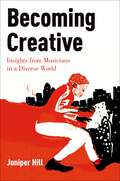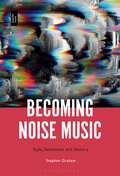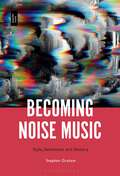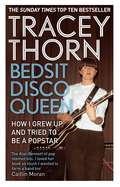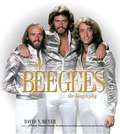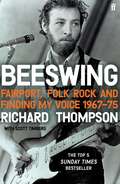- Table View
- List View
Bebop: The Music and Its Players
by Thomas Owens"When bebop was new," writes Thomas Owens, "many jazz musicians and most of the jazz audience heard it as radical, chaotic, bewildering music." For a nation swinging to the smoothly orchestrated sounds of the big bands, this revolutionary movement of the 1940s must have seemed destined for a short life on the musical fringe. But today, Owens writes, bebop is nothing less than "the lingua franca of jazz, serving as the principal musical language of thousands of jazz musicians." In Bebop, Owens conducts us on an insightful, loving tour through the music, players, and recordings that changed American culture. Combining vivid portraits of bebop's gigantic personalities with deft musical analysis, he ranges from the early classics of modern jazz (starting with the 1943 Onyx Club performances of Dizzy Gillespie, Max Roach, Oscar Pettiford, Don Byas, and George Wallington) through the central role of Charlie Parker, to an instrument-by-instrument look at the key players and their innovations. Illustrating his discussion with numerous musical excerpts, Owens skillfully demonstrates why bebop was so revolutionary, with fascinating glimpses of the tempestuous jazz world: Thelonious Monk, for example, did "everything 'wrong' in the sense of traditional piano technique....Because his right elbow fanned outward away from his body, he often hit the keys at an angle rather than in parallel. Sometimes he hit a single key with more than one finger, and divided single-line melodies between two hands." In addition to his discussions of individual instruments and players, Owens examines ensembles, with their sometimes volatile collaborations: in the Jazz Messengers, Benny Golson told of how his own mellow saxophone playing would get lost under Art Blakey's furious drumming: "He would do one of those famous four-bar drum rolls going into the next chorus, and I would completely disappear. He would holler over at me, 'Get up out of that hole!'" In this marvelous account, Owens comes right to the present day, with accounts of new musicians ranging from the Marsalis brothers to lesser-known masters like pianist Michel Petrucciani. Bebop is a jazz-lover's dream--a serious yet highly personal look at America's most distinctive music.
The Bebop Scene in London's Soho, 1945-1950: Post-war Britain’s First Youth Subculture (Palgrave Studies in the History of Subcultures and Popular Music)
by Ray KinsellaThis is the first book to tell the story of the bebop subculture in London’s Soho, a subculture that emerged in 1945 and reached its pinnacle in 1950. In an exploration via the intersections of race, class and gender, it shows how bebop identities were constructed and articulated. Combining a wide range of archival research and theory, the book evocatively demonstrates how the scene evolved in Soho’s clubs, the fashion that formed around the music, drug usage amongst a contingent of the group, and the moral panic which led to the police raids on the clubs between 1947 and 1950. Thereafter it maps the changes in popular culture in Soho during the 1950s, and argues that the bebop story is an important precedent to the institutional harassment of black-related spaces and culture that continued in the twentieth and twenty-first centuries. This book therefore rewrites the first chapter of the ‘classic’ subcultural canon, and resets the subcultural clock; requiring us to rethink the periodization and social make-up of British post-war youth subcultures.
Beckett and Musicality
by Sara Jane Bailes Nicholas TillDiscussion concerning the ’musicality’ of Samuel Beckett’s writing now constitutes a familiar critical trope in Beckett Studies, one that continues to be informed by the still-emerging evidence of Beckett’s engagement with music throughout his personal and literary life, and by the ongoing interest of musicians in Beckett’s work. In Beckett’s drama and prose writings, the relationship with music plays out in implicit and explicit ways. Several of his works incorporate canonical music by composers such as Schubert and Beethoven. Other works integrate music as a compositional element, in dialogue or tension with text and image, while others adopt rhythm, repetition and pause to the extent that the texts themselves appear to be ’scored’. But what, precisely, does it mean to say that a piece of prose or writing for theatre, radio or screen, is ’musical’? The essays included in this book explore a number of ways in which Beckett’s writings engage with and are engaged by musicality, discussing familiar and less familiar works by Beckett in detail. Ranging from the scholarly to the personal in their respective modes of response, and informed by approaches from performance and musicology, literary studies, philosophy, musical composition and creative practice, these essays provide a critical examination of the ways we might comprehend musicality as a definitive and often overlooked attribute throughout Beckett’s work.
Beckett and Musicality
by Sara Jane Bailes Nicholas TillDiscussion concerning the ’musicality’ of Samuel Beckett’s writing now constitutes a familiar critical trope in Beckett Studies, one that continues to be informed by the still-emerging evidence of Beckett’s engagement with music throughout his personal and literary life, and by the ongoing interest of musicians in Beckett’s work. In Beckett’s drama and prose writings, the relationship with music plays out in implicit and explicit ways. Several of his works incorporate canonical music by composers such as Schubert and Beethoven. Other works integrate music as a compositional element, in dialogue or tension with text and image, while others adopt rhythm, repetition and pause to the extent that the texts themselves appear to be ’scored’. But what, precisely, does it mean to say that a piece of prose or writing for theatre, radio or screen, is ’musical’? The essays included in this book explore a number of ways in which Beckett’s writings engage with and are engaged by musicality, discussing familiar and less familiar works by Beckett in detail. Ranging from the scholarly to the personal in their respective modes of response, and informed by approaches from performance and musicology, literary studies, philosophy, musical composition and creative practice, these essays provide a critical examination of the ways we might comprehend musicality as a definitive and often overlooked attribute throughout Beckett’s work.
Become a Competent Music Producer in 365 Days
by Sam GeorgeBecome a Competent Music Producer in 365 Days is a comprehensive, step-by-step guide to the fundamentals of music-production. Over the course of a year, this book takes the reader through ten chapters covering mixing, equalization, compression, reverb, delay and modulation, automation, vocals, synthesis, and mastering. To combat the patchy nature of ‘fast’ online content, this book provides an accessible and easily digestible course. Each chapter is broken down into daily readings and tasks, so that each topic can be fully explored, understood, and implemented before moving onto the next, with a range of online video tutorials that offer useful companion material to the book. Become a Competent Music Producer in 365 Days is an ideal introduction for beginners of all backgrounds, and students in further and higher education music-production classes, as well as aspiring professionals, hobbyists, and self-taught producers, who wish to have a thorough grasp on all the fundamental topics that any experienced music producer should know.
Become a Competent Music Producer in 365 Days
by Sam GeorgeBecome a Competent Music Producer in 365 Days is a comprehensive, step-by-step guide to the fundamentals of music-production. Over the course of a year, this book takes the reader through ten chapters covering mixing, equalization, compression, reverb, delay and modulation, automation, vocals, synthesis, and mastering. To combat the patchy nature of ‘fast’ online content, this book provides an accessible and easily digestible course. Each chapter is broken down into daily readings and tasks, so that each topic can be fully explored, understood, and implemented before moving onto the next, with a range of online video tutorials that offer useful companion material to the book. Become a Competent Music Producer in 365 Days is an ideal introduction for beginners of all backgrounds, and students in further and higher education music-production classes, as well as aspiring professionals, hobbyists, and self-taught producers, who wish to have a thorough grasp on all the fundamental topics that any experienced music producer should know.
Becoming a Choral Music Teacher: A Field Experience Workbook
by Patrice Madura Ward-SteinmanBecoming a Choral Music Teacher: A Field Experience Workbook, Second Edition is a choral methods textbook that prepares students in Music Education to become middle school and high school choral music teachers. It emphasizes important musical skills, vocal pedagogy and repertoire suitable for secondary school choirs in order to provide future teachers with the critical experiences to be effective. Focusing equally on rehearsal strategies, auditions and classroom management, the book is also a "workbook" that requires the students’ active learning through participation in fieldwork. Students learn in a sequential and practical manner, beginning with the study of the middle school voice and progressing to the high school voice, through practice of theory with adolescents, followed by class reflection on common problems and solutions, and then continued practice. NEW to this Edition Updated references to NAfME, and new national and state standards and licensing rules More on the needs of Special Learners in the choral classroom Latest resources on classroom management theories and practice Expanded vocal warm-ups that incorporate body movement and aural skills training More on gender issues (including LGBT awareness), sociological impact and meanings of choral singing, and emerging knowledge of multicultural choral music Becoming a Choral Music Teacher: A Field Experience Workbook, Second Edition fully integrates the choral field experience for hands-on learning and reflection and allows the student to observe and teach the book’s principles.
Becoming a Choral Music Teacher: A Field Experience Workbook
by Patrice Madura Ward-SteinmanThis textbook prepares Music Education and Choral Conducting majors to be effective middle school and high school choral music teachers. It fully integrates the choral field experience for hands-on learning and reflection and allows the student to observe and teach the book’s principles. It covers the essentials of vocal development, auditions, literature, rehearsals, classroom management, and practical matters.
Becoming a Choral Music Teacher: A Field Experience Workbook
by Patrice Madura Ward-SteinmanThis textbook prepares Music Education and Choral Conducting majors to be effective middle school and high school choral music teachers. It fully integrates the choral field experience for hands-on learning and reflection and allows the student to observe and teach the book’s principles. It covers the essentials of vocal development, auditions, literature, rehearsals, classroom management, and practical matters.
Becoming a Choral Music Teacher: A Field Experience Workbook
by Patrice Madura Ward-SteinmanBecoming a Choral Music Teacher: A Field Experience Workbook, Second Edition is a choral methods textbook that prepares students in Music Education to become middle school and high school choral music teachers. It emphasizes important musical skills, vocal pedagogy and repertoire suitable for secondary school choirs in order to provide future teachers with the critical experiences to be effective. Focusing equally on rehearsal strategies, auditions and classroom management, the book is also a "workbook" that requires the students’ active learning through participation in fieldwork. Students learn in a sequential and practical manner, beginning with the study of the middle school voice and progressing to the high school voice, through practice of theory with adolescents, followed by class reflection on common problems and solutions, and then continued practice. NEW to this Edition Updated references to NAfME, and new national and state standards and licensing rules More on the needs of Special Learners in the choral classroom Latest resources on classroom management theories and practice Expanded vocal warm-ups that incorporate body movement and aural skills training More on gender issues (including LGBT awareness), sociological impact and meanings of choral singing, and emerging knowledge of multicultural choral music Becoming a Choral Music Teacher: A Field Experience Workbook, Second Edition fully integrates the choral field experience for hands-on learning and reflection and allows the student to observe and teach the book’s principles.
Becoming a Garamut Player in Baluan, Papua New Guinea: Musical Analysis as a Pathway to Learning (SOAS Studies in Music Series)
by Tony LewisThe garamut is a log idiophone that is found in many of the coastal and island areas of Papua New Guinea. The instrument’s primary use is as a speech surrogate and in some regions the garamut is also used in large ensembles to play complex music for dancing. In Baluan Island, within the Manus Province, this style of garamut playing is comparatively highly developed. This book follows the author’s processes and methods in learning to play the music of the garamut, to the level at which he became accepted as a garamut player by the people of Baluan. Lewis argues that analysis is essential in learning to play the rapid tempi and complex rhythms of Baluan garamut music, in a cultural context where there is no formal teaching process for the music. The transcription and analysis of the Baluan garamut repertoire is the centrepiece of this study, reflecting the cognitive structures of the learning process, and revealing the inner workings of the music’s complexity as well as a striking beauty of form and structure. The book concludes with reflections on the process of a ‘cultural outsider’ becoming a garamut player in Baluan and on the role of musical analysis in that process, on the ethnomusicologist’s role in transmission of the music, and on the nature of continuity and change in a musical society such as Baluan.
Becoming a Garamut Player in Baluan, Papua New Guinea: Musical Analysis as a Pathway to Learning (SOAS Studies in Music Series)
by Tony LewisThe garamut is a log idiophone that is found in many of the coastal and island areas of Papua New Guinea. The instrument’s primary use is as a speech surrogate and in some regions the garamut is also used in large ensembles to play complex music for dancing. In Baluan Island, within the Manus Province, this style of garamut playing is comparatively highly developed. This book follows the author’s processes and methods in learning to play the music of the garamut, to the level at which he became accepted as a garamut player by the people of Baluan. Lewis argues that analysis is essential in learning to play the rapid tempi and complex rhythms of Baluan garamut music, in a cultural context where there is no formal teaching process for the music. The transcription and analysis of the Baluan garamut repertoire is the centrepiece of this study, reflecting the cognitive structures of the learning process, and revealing the inner workings of the music’s complexity as well as a striking beauty of form and structure. The book concludes with reflections on the process of a ‘cultural outsider’ becoming a garamut player in Baluan and on the role of musical analysis in that process, on the ethnomusicologist’s role in transmission of the music, and on the nature of continuity and change in a musical society such as Baluan.
Becoming a Music Teacher: From Student to Practitioner
by Donald L. Hamann Shelly CooperNew music teachers often struggle to find a way to connect the content learned in college classes with the content that will be taught in the classroom, since the nature of their work demands a high level of both musical and educational ability, while also the skills to switch from tuning an orchestra to leading a marching band or practicing voice parts with a chorus. Becoming a Music Teacher: Student to Practitioner focuses on making the connections between the college music classroom and public school music classroom transparent, visible, and relevant. Award-winning music educators Donald L. Hamann and Shelly Cooper have created a versatile text for music teacher education, and one that will provide a significant resource for music education students across the US. Based around an innovative organization and approach, Becoming a Music Teacher is made up of 40 short modules that focus on increasing a teacher's comfort and confidence level when instructing or leading groups. Each module is broken down into four individual components that demonstrate real life transfers from classes to classroom through the components of Personal Awareness, Personal Musicianship, Pre-Conducting, and Professional Knowledge. The Personal Awareness component gives a lesson on good teaching skills by focusing on body awareness, body language, and communication styles rather than abstract theories of education. Personal Musicianship provides a guided learning approach to teaching sight-singing and opportunities to create both vocal and instrumental accompaniments with the songs that are included in the modules. Pre-conducting discusses ways in which certain gestures or concepts could be used in rehearsing a school ensemble through the development of hand/arm independence, posture, and gestures. Professional knowledge links the module to the real world and places it in the context of the workplace, offering advice on how to work with other teachers and administrators, and includes characteristics of successful teachers, the role of schools in contemporary society, and diverse learners. When taken together, these components help the student develop a genuinely rounded skill set for the classroom. The lessons are activity-based and interactive, allowing readers to experiment, communicate, and provide feedback. The modules are also flexible and have been designed to be easily integrated into a music education classroom and applied to specific age groups, includingadult learners, a demographic many music education students encounter but one rarely discussed in music education classrooms. Each module stands alone, allowing instructors to customize their lesson plans by selecting or highlighting the modules most relevant to their class. This text also includes exercises that promote reflection on professionalism, collegiality, and legal factors that affect both students and teachers, not found in most education texts.
Becoming a Music Teacher: From Student to Practitioner
by Donald L. Hamann Shelly CooperNew music teachers often struggle to find a way to connect the content learned in college classes with the content that will be taught in the classroom, since the nature of their work demands a high level of both musical and educational ability, while also the skills to switch from tuning an orchestra to leading a marching band or practicing voice parts with a chorus. Becoming a Music Teacher: Student to Practitioner focuses on making the connections between the college music classroom and public school music classroom transparent, visible, and relevant. Award-winning music educators Donald L. Hamann and Shelly Cooper have created a versatile text for music teacher education, and one that will provide a significant resource for music education students across the US. Based around an innovative organization and approach, Becoming a Music Teacher is made up of 40 short modules that focus on increasing a teacher's comfort and confidence level when instructing or leading groups. Each module is broken down into four individual components that demonstrate real life transfers from classes to classroom through the components of Personal Awareness, Personal Musicianship, Pre-Conducting, and Professional Knowledge. The Personal Awareness component gives a lesson on good teaching skills by focusing on body awareness, body language, and communication styles rather than abstract theories of education. Personal Musicianship provides a guided learning approach to teaching sight-singing and opportunities to create both vocal and instrumental accompaniments with the songs that are included in the modules. Pre-conducting discusses ways in which certain gestures or concepts could be used in rehearsing a school ensemble through the development of hand/arm independence, posture, and gestures. Professional knowledge links the module to the real world and places it in the context of the workplace, offering advice on how to work with other teachers and administrators, and includes characteristics of successful teachers, the role of schools in contemporary society, and diverse learners. When taken together, these components help the student develop a genuinely rounded skill set for the classroom. The lessons are activity-based and interactive, allowing readers to experiment, communicate, and provide feedback. The modules are also flexible and have been designed to be easily integrated into a music education classroom and applied to specific age groups, includingadult learners, a demographic many music education students encounter but one rarely discussed in music education classrooms. Each module stands alone, allowing instructors to customize their lesson plans by selecting or highlighting the modules most relevant to their class. This text also includes exercises that promote reflection on professionalism, collegiality, and legal factors that affect both students and teachers, not found in most education texts.
Becoming Beyoncé: The Untold Story
by J. Randy TaraborrelliShe's adored by her millions of fans, writes and performs songs that move and inspire, but Beyoncé is truly known by very few. Now highly acclaimed biographer J. Randy Taraborrelli reveals the woman behind the star. He takes us from a childhood spent performing in talent shows to finding worldwide success with her group, Destiny's Child, managed by her father Matthew. Beyoncé's first solo album, Dangerously in Love, went straight to number one and she has to date released a total of five albums which have sold 75 million copies.Beyoncé prefers to keep her personal life with husband Jay Z and daughter Blue Ivy carefully under lock and key. She may be a top performer, fashion idol and business mogul in her own right, but fame has come at personal sacrifice and with private heartbreak. Based on exhaustive research, including exclusive interviews with those who have played pivotal roles in her life and career, the book reveals the hard-earned lessons 'Queen Bey' has learned about love, life, loyalty and family. Insightful and entertaining, this is the first authoritative biography of the most famous woman in the world today and a must-have for the 'Bey Hive'.
Becoming Creative: Insights from Musicians in a Diverse World
by Juniper HillHow are our ability and motivation to be creative shaped by the world around us? Why does creativity seem to flourish in some environments, while others seem to stifle it? Many societies value creativity as an abstract concept and many, perhaps even most, individuals feel an internal drive to be creative; however, tremendous social pressures restrict individuals' development of creative skill sets, engagement in creative activities, and willingness to take creative risks. Becoming Creative explores how social and cultural factors enable or inhibit creativity in music. Author Juniper Hill integrates perspectives from ethnomusicology, education, sociology, psychology, and performance studies, while prioritizing the voices of practicing musicians and music educators. Insights are drawn from ethnographic research and in-depth interviews with classical, jazz, and traditional musicians in South Africa, Finland, and the US. By comparing and analysing these musicians' personal experiences, Becoming Creative deepens our understanding of the development and practice of musical creativity, the external factors that influence it, and strategies for enhancing it. Hill reveals the common components of how musical creativity is experienced across these cultures and explains why creativity might not always be socially desirable. She identifies ideal creativity-enabling criteria -- specific skills sets, psychological traits and states, and access to opportunities and authority -- and illustrates how these enablers of creativity are fostered or thwarted by a variety of beliefs, attitudes, learning methods, social relationships, institutions, and social inequalities. In addition to theoretical contributions, many sections have direct applications for practice, especially the examination of formal and informal strategies for overcoming inhibitors of creativity. Becoming Creative is for scholars, artists, educators, and anyone wishing to better understand and support creative development in today's world.
BECOMING CREATIVE C: Insights from Musicians in a Diverse World
by Juniper HillHow are our ability and motivation to be creative shaped by the world around us? Why does creativity seem to flourish in some environments, while others seem to stifle it? Many societies value creativity as an abstract concept and many, perhaps even most, individuals feel an internal drive to be creative; however, tremendous social pressures restrict individuals' development of creative skill sets, engagement in creative activities, and willingness to take creative risks. Becoming Creative explores how social and cultural factors enable or inhibit creativity in music. Author Juniper Hill integrates perspectives from ethnomusicology, education, sociology, psychology, and performance studies, while prioritizing the voices of practicing musicians and music educators. Insights are drawn from ethnographic research and in-depth interviews with classical, jazz, and traditional musicians in South Africa, Finland, and the US. By comparing and analysing these musicians' personal experiences, Becoming Creative deepens our understanding of the development and practice of musical creativity, the external factors that influence it, and strategies for enhancing it. Hill reveals the common components of how musical creativity is experienced across these cultures and explains why creativity might not always be socially desirable. She identifies ideal creativity-enabling criteria -- specific skills sets, psychological traits and states, and access to opportunities and authority -- and illustrates how these enablers of creativity are fostered or thwarted by a variety of beliefs, attitudes, learning methods, social relationships, institutions, and social inequalities. In addition to theoretical contributions, many sections have direct applications for practice, especially the examination of formal and informal strategies for overcoming inhibitors of creativity. Becoming Creative is for scholars, artists, educators, and anyone wishing to better understand and support creative development in today's world.
Becoming Jimi Hendrix: From Southern Crossroads to Psychedelic London, the Untold Story of a Musical Genius
by Steven Roby Brad SchreiberBecoming Jimi Hendrix traces &“Jimmy&’s&” early musical roots, from a harrowing, hand-to-mouth upbringing in a poverty-stricken, broken Seattle home to his early discovery of the blues to his stint as a reluctant recruit of the 101st Airborne who was magnetically drawn to the rhythm and blues scene in Nashville. As a sideman, Hendrix played with the likes of Little Richard, Ike and Tina Turner, the Isley Brothers, and Sam & Dave—but none knew what to make of his spotlight-stealing rock guitar experimentation, the likes of which had never been heard before. From 1962 to 1966, on the rough and tumble club circuit, Hendrix learned to please a crowd, deal with racism, and navigate shady music industry characters, all while evolving his own astonishing style. Finally, in New York&’s Greenwich Village, two key women helped him survive, and his discovery in a tiny basement club in 1966 led to Hendrix instantly being heralded as a major act in Europe before he returned to America, appeared at the Monterey Pop Festival, and entered the pantheon of rock&’s greatest musicians. Becoming Jimi Hendrix is based on over one hundred interviews with those who knew Hendrix best during his lean years, more than half of whom have never spoken about him on the record. Utilizing court transcripts, FBI files, private letters, unpublished photos, and U.S. Army documents, this is the story of a young musician who overcame enormous odds, a past that drove him to outbursts of violence, and terrible professional and personal decisions that complicated his life before his untimely demise.
Becoming Noise Music: Style, Aesthetics, and History
by Stephen GrahamBecoming Noise Music tells the story of noise music in its first 50 years, using a focus on the music's sound and aesthetics to do so. Part One focuses on the emergence and stabilization of noise music across the 1980s and 1990s, whilst Part Two explores noise in the twenty-first century. Each chapter contextualizes – tells the story – of the music under discussion before describing and interpreting its sound and aesthetic. Stephen Graham uses the idea of 'becoming' to capture the unresolved 'dialectical' tension between 'noise' disorder and 'musical' order in the music itself; the experiences listeners often have in response; and the overarching 'story' or 'becoming' of the genre that has taken place in this first fifty or so years. The book therefore doubles up on becoming: it is about both the becoming it identifies in, and the larger, genre-making process of the becoming of, noise music. On the latter count, it is the first scholarly book to focus in such depth and breadth on the sound and story of noise music, as opposed to contextual questions of politics, history or sociology. Relevant to both musicology and noise audiences, Becoming Noise Music investigates a vital but analytically underexplored area of avant-garde musical practice.
Becoming Noise Music: Style, Aesthetics, and History
by Stephen GrahamBecoming Noise Music tells the story of noise music in its first 50 years, using a focus on the music's sound and aesthetics to do so. Part One focuses on the emergence and stabilization of noise music across the 1980s and 1990s, whilst Part Two explores noise in the twenty-first century. Each chapter contextualizes – tells the story – of the music under discussion before describing and interpreting its sound and aesthetic. Stephen Graham uses the idea of 'becoming' to capture the unresolved 'dialectical' tension between 'noise' disorder and 'musical' order in the music itself; the experiences listeners often have in response; and the overarching 'story' or 'becoming' of the genre that has taken place in this first fifty or so years. The book therefore doubles up on becoming: it is about both the becoming it identifies in, and the larger, genre-making process of the becoming of, noise music. On the latter count, it is the first scholarly book to focus in such depth and breadth on the sound and story of noise music, as opposed to contextual questions of politics, history or sociology. Relevant to both musicology and noise audiences, Becoming Noise Music investigates a vital but analytically underexplored area of avant-garde musical practice.
Bedsit Disco Queen: How I grew up and tried to be a pop star
by Tracey ThornI was only sixteen when I bought an electric guitar and joined a band. A year later, I formed an all-girl band called the Marine Girls and played gigs, and signed to an indie label, and started releasing records.Then, for eighteen years, between 1982 and 2000, I was one half of the group Everything But the Girl. In that time, we released nine albums and sold nine million records. We went on countless tours, had hit singles and flop singles, were reviewed and interviewed to within an inch of our lives. I've been in the charts, out of them, back in. I've seen myself described as an indie darling, a middle-of-the-road nobody and a disco diva. I haven't always fitted in, you see, and that's made me face up to the realities of a pop career - there are thrills and wonders to be experienced, yes, but also moments of doubt, mistakes, violent lifestyle changes from luxury to squalor and back again, sometimes within minutes.
Bedsit land: The strange worlds of Soft Cell (The British Pop Archive)
by Patrick ClarkeA rich and revealing examination of the legendary pop duo Soft Cell.Soft Cell are not your average pop band. Marc Almond and Dave Ball may be best known for the string of hits they released in 1981, but the powerful first phase of their collaboration embraced a staggering array of sounds, influences and innovations that would change the face of music to come.In Bedsit land, Patrick Clarke plunges into the archives and interviews more than sixty contributors, including the band members themselves, to follow Soft Cell through the many strange and sprawling worlds that shaped their extraordinary career. They lead him from the faded camp glamour of the British seaside to the dizzying thrills of the New York club scene. From transgressive student performance art to the sleaze and squalor of pre-gentrified Soho. From the glitz of British showbiz to the drug-addled chaos of post-Franco Spain.
Bedsit land: The strange worlds of Soft Cell (The British Pop Archive)
by Patrick ClarkeA rich and revealing examination of the legendary pop duo Soft Cell.Soft Cell are not your average pop band. Marc Almond and Dave Ball may be best known for the string of hits they released in 1981, but the powerful first phase of their collaboration embraced a staggering array of sounds, influences and innovations that would change the face of music to come.In Bedsit land, Patrick Clarke plunges into the archives and interviews more than sixty contributors, including the band members themselves, to follow Soft Cell through the many strange and sprawling worlds that shaped their extraordinary career. They lead him from the faded camp glamour of the British seaside to the dizzying thrills of the New York club scene. From transgressive student performance art to the sleaze and squalor of pre-gentrified Soho. From the glitz of British showbiz to the drug-addled chaos of post-Franco Spain.
The Bee Gees: The Biography
by David N. MeyerThe first narrative biography of the Bee Gees, the phenomenally popular vocal group that has sold more than 200 million records worldwide—sales in the company of the Beatles and Michael Jackson. The Bee Gees is the epic family saga of brothers Barry, Robin, and Maurice Gibb, and it's riddled with astonishing highs—especially as they became the definitive band of the disco era, fueled by Saturday Night Fever and crashing lows, including the tragic drug-fueled downfall of youngest brother, Andy. In recent years, a whole new generation of fans has rediscovered the undeniable grooves and harmonies that made the Bee Gees and songs like Stayin' Alive, How Deep is Your Love, To Love Somebody, and I Started a Joke timeless.
Beeswing: Fairport, Folk Rock and Finding My Voice, 1967–75
by Richard ThompsonThe memoir of international music icon Richard Thompson, co-founder of the legendary folk rock group Fairport Convention.'Thompson could be said to be an English Dylan - only in some ways he's even better than that.'GUARDIAN'This quiet joy of a memoir is just what you'd expect from one of the finest British musicians of the last 50 years.'RICHARD WILLIAMS Guitarist and songwriter Richard Thompson came of age during an extraordinary moment in British culture: it was 1967 and popular music was reflecting a great cultural awakening. In the midst of this, eighteen-year-old Thompson co-founded Fairport Convention and helped invent a new genre of music.Thompson packed more than a lifetime of experiences into his late teens and twenties. From the pivotal years of 1967 to 1975, he matured into a major musician, survived a devasting car crash and departed Fairport Convention for a duo act with his wife, Linda, at the height of the band's popularity. His discovery and ultimate embrace of Sufism profoundly reshaped his approach to everything in his life and, of course, the music he wrote thereafter. In Beeswing, Thompson goes back to his childhood, recreates the spirit of the sixties and takes us inside life on the road in the UK and the US, crossing paths - and occasionally sharing the stage - with the likes of Led Zeppelin, Pink Floyd, Nick Drake, Jimi Hendrix and more.An intimate memoir of musical discovery, personal history and social revelation, Beeswing - like Patti Smith's Just Kids or Marianne Faithfull's Faithfull - vividly captures the life of one of Britain's most significant artists during a heady period of creative intensity, in a world on the cusp of change.









